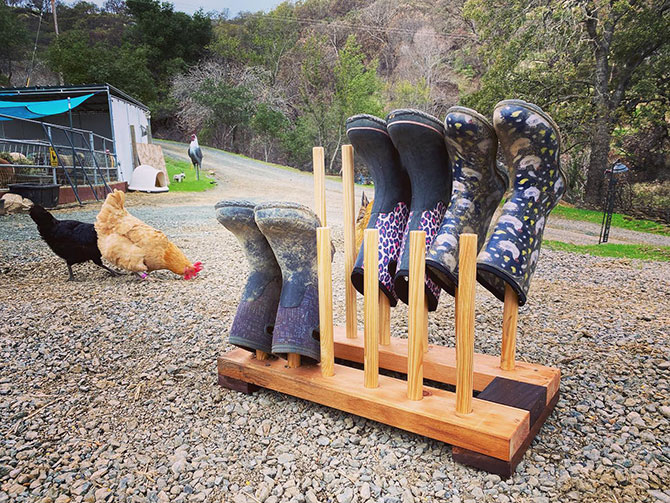Termite Talk: The Boot Rack
Recently, a Paradise Valley Estates resident approached the Termites with a request from Zinger Ranch Farm Sanctuary, a shelter adoption nonprofit sanctuary, to build them a couple of boot racks. The request was turned over to the Termite Project Team and after several email exchanges, it was determined that what Farm Sanctuary really wanted was a boot drying rack.
We were curious. Exactly what does a shelter adoption nonprofit sanctuary do? How is it different from an animal shelter, or a rescue organization? This particular sanctuary rescues farm animals that are either abused, injured or just too old for their farm duties. It offers them a place to live out their lives in a peaceful and safe environment. Additionally, this sanctuary connects rescued farm animals with seniors, first responders, military, trauma survivors and their families through animal therapy.
There are four types of animal sanctuaries reflective of the species: (1) companion animal sanctuaries; (2) wildlife sanctuaries; (3) exotic animal sanctuaries; and (4) farm animal sanctuaries. One of the most important missions of sanctuaries, beyond caring for the animals, is educating the public. The ultimate goal of many sanctuaries is to change the way that humans think of, and treat, non-human animals.
Adopting an animal at an animal shelter means selecting a pet from the shelter’s inventory, filling out an application, and bringing your pet home. This meant visiting the shelter in person, making a selection, filling out the paperwork, and taking a new pet home. These days, more shelters are offering services like online adoptions and curbside pickup.
Using a rescue organization involves either finding a pet that belongs to the rescue or using the rescue to help “curate” the best pet for your situation. Rescue organizations often save animals from overburdened shelters. Many rescues specialize in a certain type of pet, from specific breed rescues to those animals with special needs.
Zinger Ranch Farm Sanctuary, which requested the boot racks, requires a large number of volunteers in order to function. One can imagine the boots lying around the farm waiting for the volunteers to arrive. The Termites used a piece of Brazilian Redwood, also called Massaranduba, from our scrap wood pile. This wood is so heavy and dense that it requires special carbide blades and drill bits to cut it. Additionally, it doesn’t float in water. It was perfect for weighing down the boot rack. (The most common complaint seen in online reviews was that a boot rack would tip over if it was holding several pair of boots.) Our boot racks do not tip over. One-inch dowels rounded out the wood requirement while some glue and screws completed the boot drying racks. One boot rack was made using California Redwood and Brazilian Redwood while the second was made using only Brazilian Redwood.



